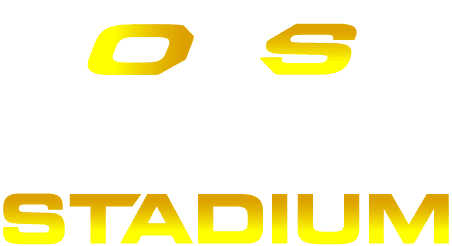The Greyhound breed is a distinct canine group admired for its physical elegance, gentle demeanour, and historical significance that extends back to ancient civilizations. Replete with distinctive features and a distinguished personality, greyhounds are praised as much for their exterior beauty as for their innate tendencies and behaviours.
Greyhound Breed Description and Characteristics
Physical Features
The physical beauty of the Greyhound breed is renowned worldwide. Distinguished by their long legs, streamlined body, sleek coat, and poised stance, these dogs are emblematic of canine elegance. The Breed’s description, as given in the fifteenth-century Boke (book) of St Albans, attributes it to a fascinating mix of attributes:
Head: Like a snake
Neck: Necked like a drake
Back: Backed like a bream
Tail: Tailed like a rat
Feet: Footed like a cat
This description suggests a collage of various animal features; however, detail-oriented breed standards reveal that the Greyhound’s design is far more considered and harmonious. Each attribute complements one another to create a balanced, agile, and graceful species.
Behavioural Traits
Revered for more than just physical beauty, Greyhounds are also celebrated for their unique personality traits. These include:
Gentle and Affectionate: Known for their tender and warm-hearted nature, greyhounds can forge strong bonds with their human companions.
Quiet and Loyal: This breed is appreciated for its peaceful disposition and steadfast loyalty.
Calm and Loving: The gentle, undemanding nature of Greyhounds makes them ideal companions for people of all ages.
Having a Greyhound as a family member is often described as both a pleasure and a privilege, reflecting their loving temperament and adaptable nature.
Historical Reference
Notably, breed standards for Greyhounds extend far back into history, with notable documentation tracing as far back as the fifteenth century. The inclusion of the Greyhound in the Boke of St Albans provides compelling evidence that the recognition and description of different breeds were significant practices in early periods, with Greyhounds being one of the earliest breeds to be characterized in such a manner.
Racing Greyhounds and Standards
Racing greyhounds, prized for their agility and speed rather than their physical appearance, are kept healthy through selective breeding that aims to avoid genetic defects. Only healthy individuals with the potential for winning races generally make it to the breeding pool.
Pricing for Racing Greyhounds
Racing greyhounds carry a significant price tag, which often acts as an incentive to breed healthy dogs and avoid any inherited defects. Exemplifying the breed’s financial value:
- Well-bred pups: Between £3,000 and £10,000
- Proven dogs: Higher than £20,000
Therefore, when adopting an ex-racing greyhound, there is minimal likelihood of encountering any inherent health defects or diseases. Furthermore, such dogs carry a rich pedigree, often featuring winning ancestors. In size, racing greyhounds are typically smaller than show greyhounds and aren’t strictly bred according to Kennel Club requirements.
Kennel Club Breed Standard for Greyhounds
The Kennel Club has established a comprehensive Breed Standard for greyhounds. This standard, serving as a guideline, describes the ideal physical and behavioural characteristics that define the breed, stressing the maintenance of overall health, welfare, and breed function.
Tabular Overview
| Feature | Description |
|---|---|
| General Appearance | Strong, muscular, upstanding with a capacious body, deep chest, and long head and neck |
| Characteristics | Remarkable stamina and endurance |
| Temperament | Intelligent, gentle, affectionate and even-tempered |
| Head and Skull | Long, with moderate width, flat skull, slight stop, and powerful jaws |
| Eyes | Bright, intelligent, oval, and obliquely set |
| Ears | Small, rose-shaped with fine texture |
| Mouth | Strong jaws with a perfect scissor bite |
| Neck | Long, muscular, elegantly arched |
| Forequarters | Oblique and muscular shoulders, long and straight forelegs |
| Body | Deep and wide chest, well-sprung ribs, broad back |
| Hindquarters | Wide and muscular thighs, well-bent stifles |
| Feet | Moderate length with compact toes |
| Tail | Long, low-set, tapering |
| Gait/Movement | Straight, low-reaching, free stride |
| Coat | Fine and close |
| Colour | Variety including black, white, red, blue, brindled |
| Size | Ideal height: Dogs – 71-76 cms, Bitches – 69-71 cms |
Any deviation from these standards would be considered a fault, and the seriousness of such a fault should be assessed based on its extent and potential impact on the dog’s health and welfare. It is interesting to compare these standards with an ex-racing greyhound’s features and character traits to understand potential variations.
Greyhound Characteristics and Abilities
A greyhound is often referred to as a ‘sight hound’ or a ‘gaze hound,’ which means that the breed relies predominantly on sight to detect prey. Highly skilled vision enables greyhounds to spot prey considerably earlier than humans or other breeds.
Related Breeds
Several other breeds are classified as sight or gaze hounds, including:
- Whippets: Similar to greyhounds, but smaller and less muscular
- Salukis: An ancient breed, slender and graceful with remarkable speed and endurance
- Borzois: Also known as Russian wolfhounds, characterized by their long, elegant coats and tall stature
- Afghans: Distinctive for their long, silky coats and elegant appearance
Of these sight hounds, the greyhound is the fastest, surpassed in speed only by the cheetah.
Living with a Retired Greyhound
Adopting a retired greyhound implies welcoming the equivalent of an Olympic athlete into one’s home. However, contrary to their impressive athletic abilities, greyhounds are calm and docile indoors. When taking these dogs outdoors, it is crucial to remember the extraordinary capabilities contained within the seemingly serene companion at the end of the leash.
Greyhound Breed History
The greyhound is one of the most ancient breeds of dogs, created through selective breeding to hunt animals such as hares and gazelles. Evidence from archaeological sites and ancient artwork indicates the presence of greyhound-type dogs in the Middle East at least three thousand years ago and possibly as far back as seven thousand. These dogs, sharing a common ancestry with breeds like the Saluki, Pharaoh hound, and Sloughi, have been an enduring presence throughout history.
Spread of Greyhounds Across Europe
As the Roman Empire expanded across Europe, greyhounds came along, eventually reaching England in the sixth century. Families of various social statuses maintained greyhounds for hunting purposes. During King Canute’s reign in 1014, a law was enacted prohibiting commoners from owning greyhounds, indicating the high value placed on the breed at the time. Consequently, the focus of greyhound hunting shifted from sustaining populations to providing entertainment for the nobility.
The Emergence of Greyhound Racing
In the sixteenth century, the Duke of Norfolk established coursing rules that laid the groundwork for greyhound racing. The eighteenth century saw a surge in popularity for greyhound racing meets, a trend that persists today, with the peak of the sport’s popularity occurring in the years following World War II.
| Period | Events & Developments |
|---|---|
| Ancient Middle East | Greyhound-type dogs in artwork and archaeological sites |
| Roman Empire | Greyhounds spread across Europe |
| 6th Century | Greyhounds reached England |
| 1014 – King Canute’s Reign | Ownership restricted to noblemen, hunting focus shifted |
| 16th Century | Coursing rules established by the Duke of Norfolk |
| 18th Century | Greyhound racing meets gained popularity |
| Post World War II | Peak of greyhound racing popularity |
Saint Guinefort and Greyhound Legends
Throughout European history, there have been numerous legends involving the bravery and loyalty of hounds. One such tale is about the greyhound named Guinefort, who was revered as a saint and protector of children by people in medieval France.
The Legend of Guinefort
The story of Guinefort: A French knight in the thirteenth century left his greyhound, Guinefort, to guard his baby while he was away. A venomous snake entered the home and tried to attack the baby. Guinefort leaped into action, killing the snake but tipping the crib over in the process. The baby remained safe, hidden beneath the upturned crib.
When the knight returned home, he saw the bloodied dog and the overturned crib but did not notice the baby. In a fit of rage, he mistakenly assumed that Guinefort had killed his child and proceeded to kill the greyhound with his sword. When the knight heard his baby cry and discovered the snake’s body, he realized his tragic mistake.
Filled with remorse, the knight’s family buried Guinefort in a disused well in the forest, covering it with stones and planting trees around it to create a shrine. The local people began venerating Guinefort as a saint, who protected children from danger. This belief persisted into the early twentieth century, although the Catholic Church never recognized Guinefort as a saint, insisting that dogs could not qualify for sainthood.
Similar Legends
Gelert’s story: Another popular legend is that of Gelert, a wolfhound known for his bravery and loyalty. Gelert’s grave can be visited in Beddgelert, Snowdonia, Wales. Many legends like these share striking similarities, making it difficult to discern whether these stories are historical or fictional cautionary tales.
| Legend | Dog’s Name | Location | Key Elements |
|---|---|---|---|
| Gelert | Gelert | Wales | Wolfhound, grave, loyalty |
| Guinefort | Guinefort | France | Greyhound, shrine, protection of children |
Significance of these Legends
Despite their uncertain origins, legends featuring faithful hounds such as Guinefort and Gelert highlight the long-standing relationship between humans and dogs, particularly the love and respect people have for these loyal companions. These stories serve to remind us of the magnificent qualities and temperaments found in breeds like greyhounds who have been cherished for centuries.
Origin of the Greyhound Breed Name
The name “greyhound” may have different possible origins. Two theories suggest that it either refers to the coat color of the early greyhounds or it originated from a Latin word indicating the breed’s superiority.
Theory Based on Coat Color
The Coat Color Theory: One perspective about the name’s origin suggests that the early greyhounds were predominantly grey in color. Over time, color variations developed due to genetic diversity. Similar patterns of color variations appearing with genetic selection have been observed in other animals. For instance, Dmitri Belyaev, a Russian geneticist in the twentieth century, experimented with the selective breeding of silver foxes to improve their tameness and handling.
In Belyaev’s experiments, which primarily aimed to improve temperament for more manageable fur farming, color variations within the silver fox population surprisingly emerged after only eighteen generations. A correlating hypothesis is that a similar color differentiation may have occurred within greyhounds over time.
Theory Based on Latin Derivation
The Latin Derivation Theory: A second theory proposes that the term “grey” is derived from the Latin word “gradus” or “grade”, implying a higher rank or degree. John Caius, a renowned sixteenth-century physician from Cambridge, expressed this idea in his writings.
According to Dr. Caius, “The greyhound hath his name of this word gre; which word soundeth gradus in Latin, in English degree, because among all dogs these are the most principal, occupying the Chiefest place, and being simply and absolutely the best of the gentle kind of hounds.”
| Theory | Explanation | Source |
|---|---|---|
| Coat Color Theory | Early greyhounds were grey; color variations developed later | Folk wisdom |
| Latin Derivation Theory | “Grey” comes from the Latin word “gradus”, implying a high degree or rank | Dr. John Caius, 16th-century physician |
These theories offer differing perspectives on the origin of the greyhound breed name. Both theories enhance our understanding of the breed’s history, and either thought could potentially be the true origin of the breed’s name.
Frequently Asked Questions About the Greyhound Breed and Its History
Q: How old is the Greyhound breed?
A: The Greyhound breed has a history that dates back over thousands of years, making them one of the oldest breeds of dogs. There are depictions of Greyhound-like dogs in art dating back to Ancient Egyptian times, around 4000 BC.
While the precise origins of the breed are uncertain due to the span of time, written references to Greyhound-type dogs appear in ancient texts from Greece, Rome, and the Middle East. Throughout history, these dogs have been praised for their hunting capabilities, speed, and noble demeanor.
Q: What were Greyhounds originally bred for?
A: Originally, Greyhounds were bred for hunting due to their exceptional speed and keen sight. These dogs are sighthounds, which means they primarily use their sight rather than their scent to locate and chase prey.
In ancient Egypt, Greyhounds were highly esteemed and used in hunting large game, like deer and wild boars. In the Middle Ages, they were commonly used in hare coursing, a popular hunting and sporting activity. Today, Greyhounds are most known for their abilities on the racetrack.
Q: How fast can Greyhounds run?
A: It’s no wonder Greyhounds are famous for their speed. They are one of the fastest dog breeds, with the ability to reach speeds of up to 45 miles per hour. This astonishing speed can be attributed to their long, lean body, flexible spine, deep chest, and muscular build, all of which contribute to their incredible agility and velocity.
To put it another way, a Greyhound can beat a racehorse in a sprint. Their acceleration is something truly remarkable to witness.
Q: Can greyhounds live comfortably in an apartment?
A: Despite their reputation as high-speed athletes, Greyhounds are known for being fairly laid-back and calm while at home. They are often referred to as “45 mph couch potatoes” because while they can reach high speeds in short bursts, they quite enjoy lounging on a comfortable couch or bed.
They can adapt well to apartment living as long as they get regular exercise to keep them fit and healthy. As they are generally quiet and well-behaved indoors, they can make excellent apartment pets. However, it is always recommended to provide them with a comfortable space where they can stretch out and relax.
Q: Why are greyhounds muzzled?
A: The muzzling of Greyhounds, especially in public spaces, is a common practice. This is primarily due to their hunting instinct and prey drive. Muzzles help prevent Greyhounds from chasing smaller animals due to these inborn instincts.
Moreover, Greyhounds have thin skin and can get minor cuts or skin tears easily during play. A muzzle can prevent accidental nipping and injuries when they socialize with other dogs. However, a muzzle isn’t always necessary, especially in controlled environments or for those dogs who have been well socialized and trained.
Q: Are greyhounds good with children and other pets?
A: Greyhounds generally have a gentle and friendly nature, which makes them good companions for children. They are usually non-aggressive, tolerant, and can get along well with kids if they are introduced properly.
As for other pets, Greyhounds can coexist peacefully with them, especially if they are raised together. But owing to their strong prey drive, some Greyhounds may not be accustomed to small animals like cats or rabbits. If considering adding a Greyhound to a family with smaller pets, it is crucial to assess the dog’s individual temperament and prey drive.
Q: What does a greyhound’s diet consist of?
A: Like all dogs, Greyhounds require a balanced diet to stay healthy. This includes proteins, carbohydrates, fats, vitamins, and minerals. A high-quality commercial dog food that is designed for the dog’s size and life stage (puppy, adult, senior) can typically provide this balance.
Although Greyhounds have lean bodies, it doesn’t mean they require less food. Their metabolism is quite high, especially when they are active. Therefore, they need a diet that can provide sufficient energy. But as with any breed, it’s important to monitor your Greyhound’s weight and adjust their food intake if necessary to prevent obesity.
Q: Is it true that greyhounds don’t bark?
A: While every dog is different and has its unique personality, Greyhounds as a breed are usually quieter and less prone to excessive barking than many other breeds. But this doesn’t mean that Greyhounds are silent.
They can bark to express various needs or feelings, such as excitement, attention-seeking, or alerting to someone at the door. However, chronic or excessive barking is not typical for this breed. If a Greyhound is persistently barking, it may indicate that they’re bored, anxious, or something in their environment is bothering them.
Q: How long do Greyhounds live on average?
A: Greyhounds have a surprisingly long average lifespan for a large dog breed. They typically live between 10-14 years. Their lifespan can sometimes reach into their late teens with good care and proper nutrition.
Despite their speed and athleticism, Greyhounds can be prone to certain health issues like bloat, heart disease, and osteosarcoma (a type of bone cancer). Regular veterinary check-ups can help detect and treat these issues early.
Q: What sort of exercise do Greyhounds need?
A: Even though Greyhounds are racing dogs, they don’t actually require extensive exercise. A few short walks and a chance to run in a secure, fenced area are usually enough to keep them happy and healthy.
Despite their running capacity, Greyhounds are sprinters rather than endurance athletes. This means that they love to run fast for short periods rather than going for long, sustained runs. They would much prefer a good sprint in the backyard and then a nice long nap on a comfortable bed. Of course, their exercise needs can vary based on their age, health status, and individual personality.




